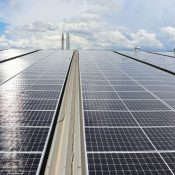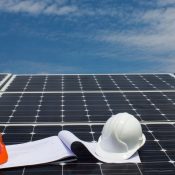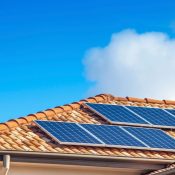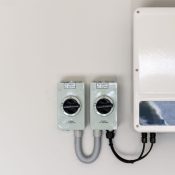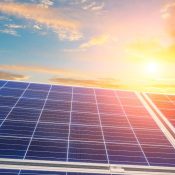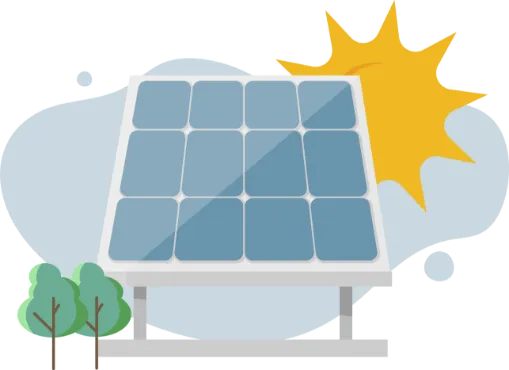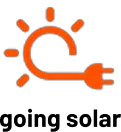Solar Panels Orientation And Tilt: Maximise Energy Production
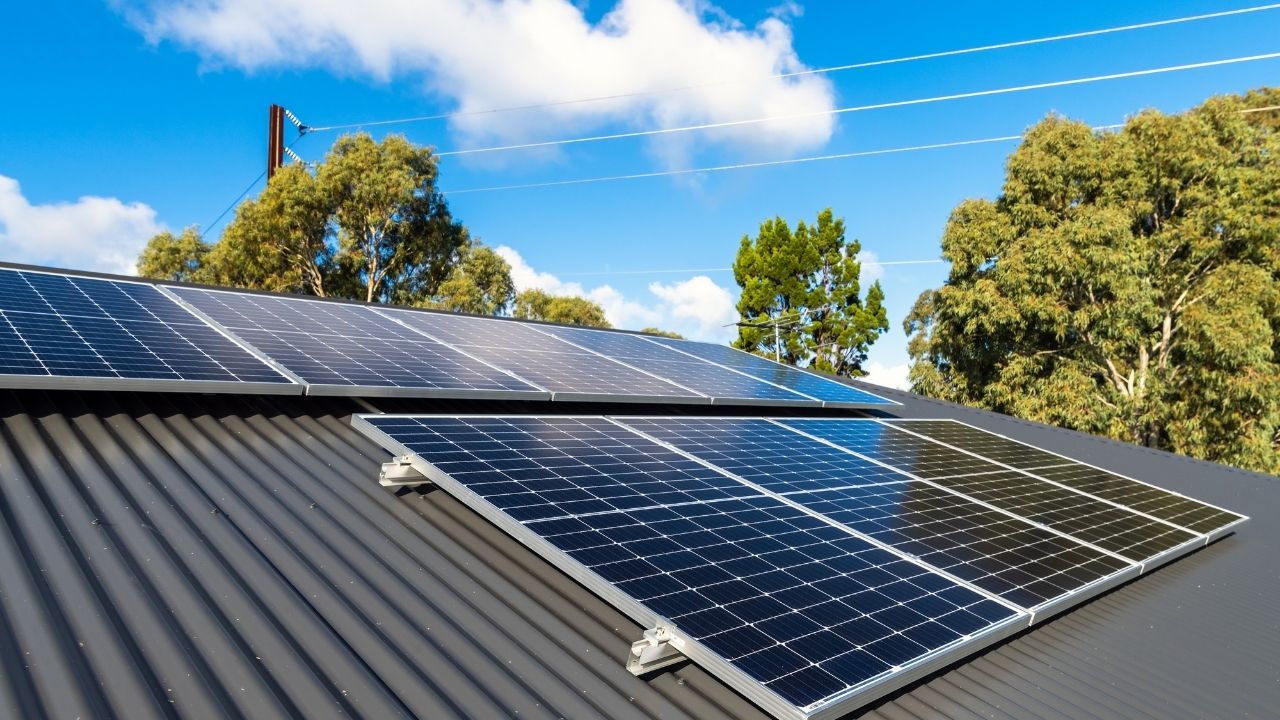
Many people in Ireland are turning to solar panels as a sustainable energy solution but often find themselves puzzled by how to maximise their efficiency. The angle and orientation of your solar panels play a crucial role in how much energy you can harness from the sun. Without the right setup, you might not be capturing as much solar power as you could be. This leads to a common question: How do you optimise your solar panel angle for the best energy production?
The answer lies in understanding the factors that affect solar panel angles and learning how to calculate the optimal tilt based on your specific location. By adjusting your solar panels to the perfect angle, you can significantly increase their efficiency and energy output.
So, let’s dive in and explore how you can make the most of your solar investment. So, let’s get started.
Why Aligning Solar Panels With the Sun is Necessary?
Aligning solar panels with the sun is key to maximising energy production, especially in Ireland’s unique climate. Initially, understanding the sun’s journey across the sky, which changes with the seasons, is crucial.
Consequently, solar panels in Ireland are typically positioned to face south, capturing sunlight as it traverses from east to west. Furthermore, the tilt of the panels significantly impacts their efficiency. A steeper angle in winter captures the low sun, whereas a shallower angle in summer is optimal for the higher sun.
Therefore, proper alignment and tilt are essential for efficiently converting sunlight into electricity, a vital strategy to counteract Ireland’s mix of sunny, cloudy, and rainy days.
Ultimately, by optimising the position of your solar panels, you not only harness more energy but also make your solar investment more effective.
Finding the Optimal Tilt Angle for Solar Panels in Ireland
When setting up solar panels in Ireland, getting the tilt angle right is key to maximising their efficiency. So, let’s break this down into simple steps and tips to ensure you’re capturing as much sunshine as possible in Ireland.
Why the Tilt Angle Matters
The tilt angle of your solar panels can greatly affect how much power they generate. A well-angled panel will catch more sunlight, especially during the shorter winter days. In Ireland, where the sun’s position changes significantly throughout the year, adjusting your panel’s tilt can make a big difference.
Best Angle for Irish Solar Panels
Spring and Summer
During the brighter months, from late March to September, the sun is higher in the sky. Setting your solar panels at a shallower angle helps capture more of the direct sunlight. In Ireland, a tilt of about 15 to 25 degrees is often recommended for these months.
Autumn and Winter
In the darker months, from October to early March, the sun sits lower on the horizon. To catch as much sunlight as possible during this period, you should increase the tilt angle. A steeper angle of around 35 to 45 degrees is typically best for Irish winters.
Adjusting for Maximum Efficiency
While adjusting the angle seasonally can optimise solar panel performance, it’s not always practical for everyone. Adjusting your panels throughout the year isn’t an option; so don’t worry. A fixed tilt angle can still provide great results.
A Year-Round Solution
For those looking for a set-it-and-forget-it solution, setting your solar panels at a fixed angle that balances summer and winter sun exposure is the way to go. In Ireland, a tilt angle of about 30 to 35 degrees is a good middle ground. This angle is close to the average of the country’s latitude, offering a nice compromise for year-round solar capture.
Seasonal adjustments
Remember, the goal is to capture as much sunlight as possible, but you don’t need to overcomplicate things. A fixed tilt angle of 30 to 35 degrees works well for most homes in Ireland. However, if you’re able to adjust the angle seasonally, tweaking it between 15 to 25 degrees for summer and 35 to 45 degrees for winter can optimise your solar panel’s performance.
What Factors Affect Solar Panel Angle
Several factors play a crucial role in determining the best angle for your solar panels. So, understanding these factors can help you make informed decisions to ensure your solar panels perform at their peak.
Geographic Location
First and foremost, where you live greatly influences the optimal tilt angle for your solar panels. Your geographic location determines the angle of the sun in relation to the horizon throughout the year.
In Ireland, for example, the sun is lower in the sky compared to countries closer to the equator. This means solar panels in Ireland might need a steeper tilt to catch the sun’s rays effectively, especially during the shorter days of winter.
Seasonal Changes
The sun’s path changes with the seasons, sitting higher in the sky during the summer and lower during the winter. This variation means the optimal angle for your solar panels can change throughout the year. Adjusting the tilt of your panels to accommodate these changes can enhance their efficiency, capturing more sunlight as the sun’s position shifts.
Time of Day
Solar panels capture the most energy when they face directly towards the sun. This is why the time of day can affect the optimal angle. While it’s not practical to adjust your panels constantly throughout the day (unless you have an automatic tracking system), understanding the sun’s path can help you find a good average position that works well over the course of the day.
Surrounding Obstacles
Buildings, trees, or other structures that cast shadows on your solar panels can significantly reduce their performance. When considering the angle of your panels, it’s important to take into account any potential obstructions that could block sunlight, especially during the times of day when the sun is lower in the sky.
Roof Slope
The slope of your roof also affects the optimal angle for your solar panels. If your roof slope is already close to the ideal angle for your location, you might not need additional tilting. However, if the slope of your roof is significantly off from the optimal angle, you may need to use mounts to adjust the tilt of your panels.
Panel Type
Finally, the type of solar panels you have can influence the best tilt angle. Some panels are more efficient at capturing diffuse light, meaning they can perform better even when not directly facing the sun. Knowing the specifications of your panels can help you decide how important adjusting the tilt is for your setup.
The Role of Solar Tracking Systems
Solar tracking systems take the guesswork out of finding the perfect angle for your solar panels. These smart systems move your panels throughout the day, making sure they’re always facing the sun directly. This is great because it means your panels can catch the most sunlight from sunrise to sunset, boosting the amount of power they generate.
How They Work
Think of solar trackers like sunflowers. Just as sunflowers tilt to follow the sun across the sky, solar tracking systems adjust the angle of your solar panels. This ensures they’re in the optimal position to absorb sunlight, no matter the time of day.
The Benefits
The main perk of using solar tracking systems is the increase in energy production. By constantly adjusting to face the sun, solar panels can produce more electricity than if they were in a fixed position. This can be especially useful in places with changing weather patterns, as the system can adapt to the sun’s movement through partially cloudy skies.
Technological Advancements in Optimisation
Technology is making it easier to get the most out of solar panels. Now, there are tools and software that can analyse lots of data, like the sun’s path, weather patterns, and even the landscape around your home. They use this information to suggest the best tilt and direction for your solar panels.
Smart Tools
Some smart tools use algorithms to predict the sun’s path across different seasons. This helps in planning the optimal setup for your solar panels even before they’re installed. Other tools might take into account the historical weather data of your area to suggest adjustments for maximising solar energy capture throughout the year.
How to Calculate Solar Panel Angle Optimisation by Zip Code?
Figuring out the best angle for your solar panels can also be as simple as knowing your zip code. There are online calculators that use your location to suggest the ideal tilt angle for your solar panels.
A Step-by-Step Process
- Enter Your Zip Code: Start by typing in your zip code. This gives the calculator a starting point to understand where you are.
- Analyse Sunlight Data: The calculator looks at how the sun moves across the sky in your area. It considers things like the highest point the sun reaches and how long the days are.
- Consider Local Weather: Some calculators also look at local weather trends, like how often it’s cloudy or sunny.
- Get Recommendations: Based on this information, the calculator suggests the best tilt angle for your solar panels.
This approach is great because it’s easy and quick. Plus, it customises the advice to your specific location, making sure you’re getting the most accurate recommendation.
Final words!
Properly setting up your solar panels in terms of angle and orientation is essential for tapping into the maximum solar potential in Ireland. Understanding the impact of geographical location, seasonal variations, and the benefits of advanced technologies such as solar tracking systems can significantly enhance your solar energy production.
So, if you’re looking to optimise your current solar setup for better energy yield, expert assistance is invaluable. Contact a Going Solar expert today to ensure your solar panel orientation and tilt are perfectly aligned for maximising energy production in Ireland.
Take the first step towards a greener future and make the most out of your solar investment with professional guidance.
Planning a switch to solar energy?
Contact Going Solar now and Get Free Advice & Quote Within Minutes!
Frequently Asked Questions
Contact Going Solar Now!
Joe Brennan
Founder @ Going Solar
Joe Brennan, the founder of Going Solar, is dedicated to making solar power mainstream in Ireland and meet SEAI objectives. With a focus on affordability and sustainability, he is bringing renewable energy solutions to homes, reducing costs & environmental impact.
Recent Posts

